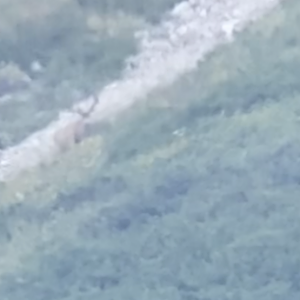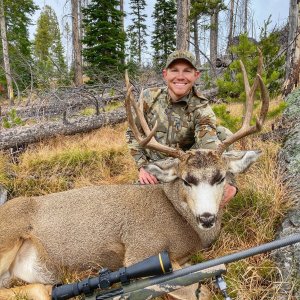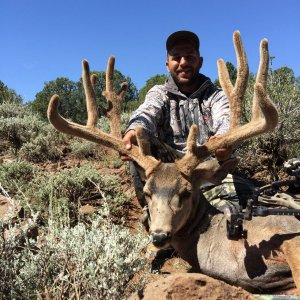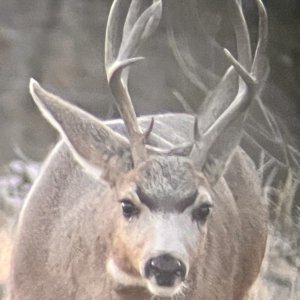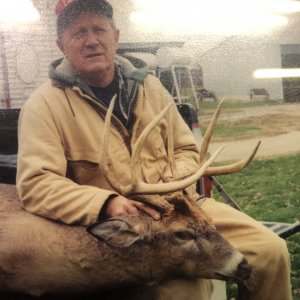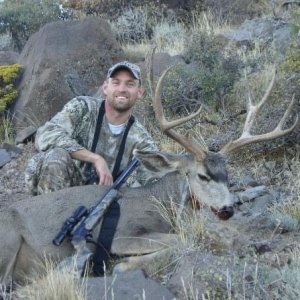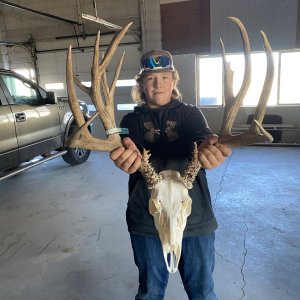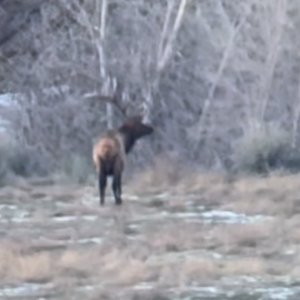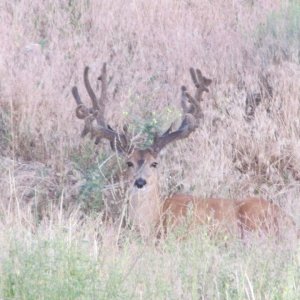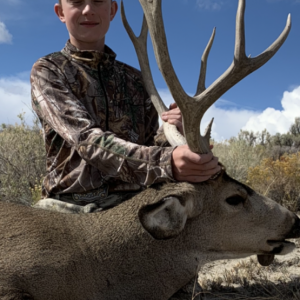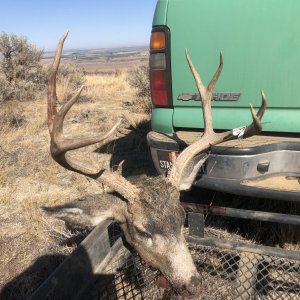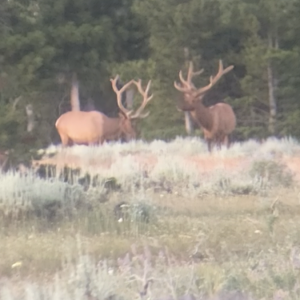feddoc
Long Time Member
- Messages
- 7,231
(From the Second Battle of Cabin Creek)...if you have facebook.
There is usually a grain of truth to most legends and so it is with Josey Wales. More than a grain in this case, however it's more like a whole bushel basket!
Josey Wales was based on a real man and one that was reputedly as tough, violent and vengeful as Wales. But, unlike the movie, the real man did not have as his driving force a vengeance for a family murdered by Yankee soldiers. But his family was rousted from their house and their homestead burned to the ground by Yankee troops.
The "real Josey Wales" was a Confederate guerilla fighter, a “bushwacker,” an associate of Quantrill's raiders, deadly shot, and killer of many.
He was born William “Bill” Wilson (pictured below) in the Ozarks Mountains of Missouri of a well-to-do family. He grew into a very tall, dark and handsome man - 6’2”, with jet black curly hair and sparkling crystal blue eyes. He was an amiable fellow, good-natured, clever, and skilled at playing the violin, so he was always in demand for weddings and parties.
His nimble fingers were not only quick on the fiddle, they were also quick on the trigger as well. He was a deadly shot and always had on both hips two .44-calibre six shooters. He was a sure-shot at a stand-still but also practiced assiduously shooting on the run from the back of his horse.
Bill’s father was a prosperous farmer who had made pains to remain neutral in the violently split border state of Missouri. He had owned several slaves but freed them before the War and advised his grown children to remain as neutral as possible. But, in the summer of 1861, just after the war had started, some horses were stolen from the Yankee forces in the area, allegedly by Confederate guerillas. Bill Wilson was immediately regarded as a suspect. A few days later, a group of Yankee solders raided his home, threw out his family, stole everything they could and set the entire homestead on fire. That was the end of Bill’s “neutrality.”
He moved his family to a small cabin on his parents’ farm and began a campaign of blood vengeance that would become legend in the Ozark Mountains, then the entire country.
Reports of the bodies of Yankee soldiers being discovered began circulating. The first were the four Yankees who had raided Wilson's farm. He hid in the trees by the trail leading back to the Union army headquarters at Rolla, Missouri, and waited for soldiers to come down the trail. With both of his revolvers drawn, he surprised them on the road and killed all four.
Killing Yankees had a side benefit: Wilson confiscated their Army mounts and supplied Quantrill's men with mounts for their many raids. Wilson became known as “The Great Bushwacker” because he ambushed many of the soldiers he killed. The number of Yankees that Wilson killed is unknown, but according to the legend, possibly dozens.
When the war ended in 1865, there was a $300 bounty on him, an immense amount at that time. He rode to Texas with as many as 150 other former Quantrill men to hide out. Some brokered pardons with the U.S. government, but Wilson never did. He continued to make trips back to Missouri to visit his family and was welcomed by the Ozark Mountain people as a folk hero.
Wilson lived near Sherman, Texas, and married an Indian woman named Mary Ann Noaks in April of 1865. About 1869, he was selling a wagon load of apples in McKinney, Texas, when two men saw him. They decided to rob him and ambushed him north of the small frontier town of Van Alstyne, shot him many times to ensure that he was dead, robbed him and buried him in a shallow grave.
The two desperadoes were later caught, confessed and were hanged in Sherman on March 26, 1869. But Wilson's grave was never found.
For about 60 years, Wilson’s legend continued to survive in the South. Then one of his descendants, George Clinton Arthur, wrote a biography about Wilson in 1938: “Bushwacker: Missouri’s Most Infamous Desperado.”
It would be another 30 years before another book would be written about Wilson and his exploits during the war and this one would lead to the famous movie. In 1972. Author Forrest Carter wrote “The Rebel Outlaw: Josey Wales.”
Carter sent the book to Clint Eastwood’s office as an unsolicited submission. Eastwood’s partner read it and suggested buying the rights. (The same book was later re-released by the publisher with a new name, "Gone to Texas," and that is the title that is credited in the movie credits).
“The Outlaw Josey Wales,” was released in 1976. The film was a great commercial and artistic success and has become a cult classic.
In 1996, the film was selected for preservation in the National Film Registry of the Library of Congress for being deemed "culturally, historically, or aesthetically significant.”
The movie portrays Native Americans and especially an old Cherokee man as very sympathetically and fellow renegades and free spirits, like Wales.
The last scene of “The Outlaw Josey Wales,” has a sweet resonance and resolution - and a little inside joke for history lovers who know the real story behind the legend. When the men who have been hunting Wales. finally think they have found him in a bar in Santa Rio, Texas, a prostitute and other locals cover for the outlaw, saying that Wales was killed in a shoot-out in Monterrey, Mexico. They vouch for Josey, saying that he is a local.
As he enters the saloon, one of them greets him, saying: “Mr. Wilson...”
And now you know the rest of the story.
WILSON FAMILY MEMBER RESPONDS TO OUR POST.
Responding to our first post about Wilson, Wilson family descendant Amanda Keitzer wrote: "Bushwhacker Bill was my Great Great Grandfather on my Mother's side. My Mother's maiden name was Wilson, her Father was John O. Wilson. The family says that Bill did not die in Texas, he died in Missouri and he was buried near the old homestead, which is also where the tree with the ring of bullet holes stands, where Bill practiced shooting while galloping his horse in a circle around that tree. I myself never saw it, but my Mom did. The whole thing was very hush hush among the family because they viewed his actions as shameful, that he was a murderer, a mar to the family name. My Mom remembers the film crew coming to her parents farm and asking for permission to use his actual name in the film and to interview the family for details as to the accuracy of the book "Gone to Texas", which was written about Bill Wilson, and the film was based on that book. According to my Mom, her father denied permission to use the family name and ran them off of the property with a shot gun. They did, however, end up using the name "Wilson" at the end of the movie."
There is usually a grain of truth to most legends and so it is with Josey Wales. More than a grain in this case, however it's more like a whole bushel basket!
Josey Wales was based on a real man and one that was reputedly as tough, violent and vengeful as Wales. But, unlike the movie, the real man did not have as his driving force a vengeance for a family murdered by Yankee soldiers. But his family was rousted from their house and their homestead burned to the ground by Yankee troops.
The "real Josey Wales" was a Confederate guerilla fighter, a “bushwacker,” an associate of Quantrill's raiders, deadly shot, and killer of many.
He was born William “Bill” Wilson (pictured below) in the Ozarks Mountains of Missouri of a well-to-do family. He grew into a very tall, dark and handsome man - 6’2”, with jet black curly hair and sparkling crystal blue eyes. He was an amiable fellow, good-natured, clever, and skilled at playing the violin, so he was always in demand for weddings and parties.
His nimble fingers were not only quick on the fiddle, they were also quick on the trigger as well. He was a deadly shot and always had on both hips two .44-calibre six shooters. He was a sure-shot at a stand-still but also practiced assiduously shooting on the run from the back of his horse.
Bill’s father was a prosperous farmer who had made pains to remain neutral in the violently split border state of Missouri. He had owned several slaves but freed them before the War and advised his grown children to remain as neutral as possible. But, in the summer of 1861, just after the war had started, some horses were stolen from the Yankee forces in the area, allegedly by Confederate guerillas. Bill Wilson was immediately regarded as a suspect. A few days later, a group of Yankee solders raided his home, threw out his family, stole everything they could and set the entire homestead on fire. That was the end of Bill’s “neutrality.”
He moved his family to a small cabin on his parents’ farm and began a campaign of blood vengeance that would become legend in the Ozark Mountains, then the entire country.
Reports of the bodies of Yankee soldiers being discovered began circulating. The first were the four Yankees who had raided Wilson's farm. He hid in the trees by the trail leading back to the Union army headquarters at Rolla, Missouri, and waited for soldiers to come down the trail. With both of his revolvers drawn, he surprised them on the road and killed all four.
Killing Yankees had a side benefit: Wilson confiscated their Army mounts and supplied Quantrill's men with mounts for their many raids. Wilson became known as “The Great Bushwacker” because he ambushed many of the soldiers he killed. The number of Yankees that Wilson killed is unknown, but according to the legend, possibly dozens.
When the war ended in 1865, there was a $300 bounty on him, an immense amount at that time. He rode to Texas with as many as 150 other former Quantrill men to hide out. Some brokered pardons with the U.S. government, but Wilson never did. He continued to make trips back to Missouri to visit his family and was welcomed by the Ozark Mountain people as a folk hero.
Wilson lived near Sherman, Texas, and married an Indian woman named Mary Ann Noaks in April of 1865. About 1869, he was selling a wagon load of apples in McKinney, Texas, when two men saw him. They decided to rob him and ambushed him north of the small frontier town of Van Alstyne, shot him many times to ensure that he was dead, robbed him and buried him in a shallow grave.
The two desperadoes were later caught, confessed and were hanged in Sherman on March 26, 1869. But Wilson's grave was never found.
For about 60 years, Wilson’s legend continued to survive in the South. Then one of his descendants, George Clinton Arthur, wrote a biography about Wilson in 1938: “Bushwacker: Missouri’s Most Infamous Desperado.”
It would be another 30 years before another book would be written about Wilson and his exploits during the war and this one would lead to the famous movie. In 1972. Author Forrest Carter wrote “The Rebel Outlaw: Josey Wales.”
Carter sent the book to Clint Eastwood’s office as an unsolicited submission. Eastwood’s partner read it and suggested buying the rights. (The same book was later re-released by the publisher with a new name, "Gone to Texas," and that is the title that is credited in the movie credits).
“The Outlaw Josey Wales,” was released in 1976. The film was a great commercial and artistic success and has become a cult classic.
In 1996, the film was selected for preservation in the National Film Registry of the Library of Congress for being deemed "culturally, historically, or aesthetically significant.”
The movie portrays Native Americans and especially an old Cherokee man as very sympathetically and fellow renegades and free spirits, like Wales.
The last scene of “The Outlaw Josey Wales,” has a sweet resonance and resolution - and a little inside joke for history lovers who know the real story behind the legend. When the men who have been hunting Wales. finally think they have found him in a bar in Santa Rio, Texas, a prostitute and other locals cover for the outlaw, saying that Wales was killed in a shoot-out in Monterrey, Mexico. They vouch for Josey, saying that he is a local.
As he enters the saloon, one of them greets him, saying: “Mr. Wilson...”
And now you know the rest of the story.
WILSON FAMILY MEMBER RESPONDS TO OUR POST.
Responding to our first post about Wilson, Wilson family descendant Amanda Keitzer wrote: "Bushwhacker Bill was my Great Great Grandfather on my Mother's side. My Mother's maiden name was Wilson, her Father was John O. Wilson. The family says that Bill did not die in Texas, he died in Missouri and he was buried near the old homestead, which is also where the tree with the ring of bullet holes stands, where Bill practiced shooting while galloping his horse in a circle around that tree. I myself never saw it, but my Mom did. The whole thing was very hush hush among the family because they viewed his actions as shameful, that he was a murderer, a mar to the family name. My Mom remembers the film crew coming to her parents farm and asking for permission to use his actual name in the film and to interview the family for details as to the accuracy of the book "Gone to Texas", which was written about Bill Wilson, and the film was based on that book. According to my Mom, her father denied permission to use the family name and ran them off of the property with a shot gun. They did, however, end up using the name "Wilson" at the end of the movie."

